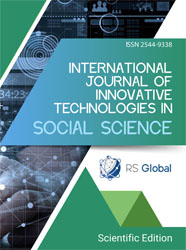MONOCLONAL ANTIBODIES TARGETING CGRP IN MIGRAINE: CURRENT PERSPECTIVES AND CLINICAL GUIDELINES
Abstract
Aim: This review aims to explore the clinical relevance and therapeutic potential of monoclonal antibodies targeting the calcitonin gene-related peptide (CGRP) pathway in the preventive treatment of migraine. Emphasis is placed on their mechanism of action, efficacy, and safety as demonstrated in clinical trials, as well as on their practical implementation in routine care. By examining current evidence and real-world application, the review seeks to inform clinicians about the benefits and appropriate use of anti-CGRP monoclonal antibodies in patients with disabling migraine.
Methods: We conducted a comprehensive literature search in April and May 2025 using the PubMed and Google Scholar databases. The search included peer-reviewed articles published between 2015 and 2025, with a focus on studies investigating monoclonal antibodies and geptans used in the treatment of migraine. We prioritized original research involving human subjects and excluded unpublished abstracts and conference proceedings. Only articles available in English and Polish were considered.
Results: Recent studies confirm the sustained safety and effectiveness of all four CGRP monoclonal antibodies, supporting earlier access due to their good tolerability, reduced migraine frequency, and improved quality of life.
Conclusions: We should increase the awareness among specialists about the effectiveness and safety of anti-CGRP monoclonal antibodies so that more patients have the opportunity to benefit from treatment.
References
Dos Santos JBR, da Silva MRR. Small molecule CGRP receptor antagonists for the preventive treatment of migraine: A review. Eur J Pharmacol. 2022; 922:174902. doi:10.1016/j.ejphar.2022.174902.
Goadsby PJ, Holland PR, Martins-Oliveira M, Hoffmann J, Schankin C, Akerman S. Pathophysiology of migraine: A disorder of sensory processing. Physiol Rev. 2017; 97(2):553–622. doi:10.1152/physrev.00034.2015.
Raffaelli B, Do TP, Ashina H, Snellman J, Maio-Twofoot T, Ashina M. Induction of cGMP-mediated migraine attacks is independent of CGRP receptor activation. Cephalalgia. 2024; 44(6):3331024241259489. doi:10.1177/03331024241259489.
Uddman R, Edvinsson L, Ekman R, Kingman T, McCulloch J. Innervation of the feline cerebral vasculature by nerve fibers containing calcitonin gene-related peptide: Trigeminal origin and co-existence with substance P. Neurosci Lett. 1985; 62(1):131–6. doi:10.1016/0304-3940(85)90296-4.
Berman G, Croop R, Kudrow D, Halverson P, Lovegren M, Thiry AC, et al. Safety of rimegepant, an oral CGRP receptor antagonist, plus CGRP monoclonal antibodies for migraine. Headache. 2020; 60(8):1734–42. doi:10.1111/head.13930.
Croop R, Goadsby PJ, Stock DA, Conway CM, Forshaw M, Stock EG, et al. Efficacy, safety, and tolerability of rimegepant orally disintegrating tablet for the acute treatment of migraine: A randomized, phase 3, double-blind, placebo-controlled trial. Lancet. 2019; 394(10200):737–45. doi:10.1016/S0140-6736(19)31606-X.
Woroń J. CGRP receptor and its role in the pharmacotherapy of migraine. BÓL. 2020; 21(3):44–7. doi:10.5604/01.3001.0014.5277.
Edvinsson L. CGRP receptor antagonists and antibodies against CGRP and its receptor in migraine treatment. Br J Clin Pharmacol. 2015; 80(2):193–9. doi:10.1111/bcp.12618.
Stępień A, Kozubski W, Rożniecki J, Domitrz I. Migraine treatment – updated recommendations 2024. BÓL. 2024; 25(1):9–33. doi:10.5604/01.3001.0054.4389.
Sacco S, Amin FM, Ashina M, Bendtsen L, Deligianni CI, Gil-Gouveia R, et al. European Headache Federation guideline on the use of monoclonal antibodies targeting the CGRP pathway for migraine prevention – 2022 update. J Headache Pain. 2022; 23(1):67. doi:10.1186/s10194-022-01431-x.
Hepp Z, Dodick DW, Varon SF, Chia J, Matthew N, Gillard P, et al. Persistence and switching patterns of oral migraine prophylactic medications among patients with chronic migraine: A retrospective claims analysis. Cephalalgia. 2017; 37(5):470–85. doi:10.1177/0333102416678382.
Dodick DW, Ashina M, Brandes JL, Kudrow D, Lanteri-Minet M, Osipova V, et al. ARISE: A phase 3 randomized trial of erenumab for episodic migraine. Cephalalgia. 2018; 38(6):1026–37.
Mulleners WM, Kim BK, Lainez MJA, Lanteri-Minet M, Pozo-Rosich P, Wang S, et al. Safety and efficacy of galcanezumab in patients for whom previous preventive medication failed (CONQUER): A multicentre, randomised, double-blind, placebo-controlled, phase 3b trial. Lancet Neurol. 2020; 19(10):814–25.
Skljarevski V, Matharu M, Millen BA, Ossipov MH, Kim BK, Yang JY. Efficacy and safety of galcanezumab for the prevention of episodic migraine: Results of the EVOLVE-2 trial. Cephalalgia. 2018; 38(8):1442–54.
Staufer VL, Dodick DW, Zhang Q, Carter JN, Ailani J, Conley RR. Evaluation of galcanezumab for the prevention of episodic migraine: The EVOLVE-1 trial. JAMA Neurol. 2018; 75(9):1080–88.
Ferrari MD, Diener HC, Ning X, Galic M, Cohen JM, Yang R, et al. Fremanezumab versus placebo for migraine prevention (FOCUS trial). Lancet. 2019; 394(10203):1030–40.
Reuter U, Goadsby PJ, Lanteri-Minet M, Wen S, Hours-Zesiger P, Ferrari MD, et al. Efficacy and tolerability of erenumab in patients with episodic migraine after prior treatment failure: A phase 3b study. Lancet. 2018; 392(10161):2280–87.
Silberstein SD, Dodick DW, Bigal ME, Yeung PP, Goadsby PJ, Blankenbiller T, et al. Fremanezumab for the preventive treatment of chronic migraine. N Engl J Med. 2017; 377(22):2113–22.
Bigal ME, Edvinsson L, Rapoport AM, Lipton RB, Spierings EL, Diener HC, et al. Safety, tolerability, and efficacy of TEV-48125 for chronic migraine: A phase 2b trial. Lancet Neurol. 2015; 14(11):1091–100.
Reuter U, Ehrlich M, Gendolla A, Heinze A, Klatt J, Wen S, et al. Erenumab versus topiramate for migraine prevention: A randomised, double-blind, active-controlled phase 4 trial. Cephalalgia. 2022; 42(2):108–18.
Al-Hassany L, Goadsby PJ, Danser AHJ, Maassen Van Den Brink A. CGRP-targeting drugs for migraine: How pharmacology might inform treatment decisions. Lancet Neurol. 2022; 21(3):284–94.
European Medicines Agency. Aimovig: EPAR – Product information [Internet]. Amsterdam: EMA; 2024 [cited 2025 Jun 1]. Available from: https://www.ema.europa.eu/en/documents/product-information/aimovig-epar-product-information_en.pdf
European Medicines Agency. Vyepti: EPAR – Product information [Internet]. Amsterdam: EMA; 2024 [cited 2025 Jun 1]. Available from: https://www.ema.europa.eu/en/documents/product-information/vyepti-epar-product-information_en.pdf
European Medicines Agency. Ajovy: EPAR – Product information [Internet]. Amsterdam: EMA; 2024 [cited 2025 Jun 1]. Available from: https://www.ema.europa.eu/en/documents/product-information/ajovy-epar-product-information_en.pdf
European Medicines Agency. Emgality: EPAR – Product information [Internet]. Amsterdam: EMA; 2024 [cited 2025 Jun 1]. Available from: https://www.ema.europa.eu/en/documents/product-information/emgality-epar-product-information_en.pdf
Goldstein ED, Badi MK, Meschia JM. Treating chronic migraine in CADASIL with CGRP receptor antagonism. Neurol Clin Pract. 2019; 9(3):277–78. doi:10.1212/CPJ.0000000000000651.
Walker CS, Eftekhari S, Bower RL, et al. A second trigeminal CGRP receptor: Function and expression of the AMY1 receptor. Ann Clin Transl Neurol. 2015; 2(6):595–608.
Bhakta M, Vuong T, Taura T, et al. Migraine therapeutics differentially modulate the CGRP pathway. Cephalalgia. 2021; 41(5):499–514.
MaassenVanDenBrink A, Meijer J, Villalón CM, Ferrari MD. Wiping out CGRP: Potential cardiovascular risks. Trends Pharmacol Sci. 2016; 37(9):779–88.
Wang X, Chen Y, Song J, et al. Efficacy and safety of monoclonal antibodies against CGRP or its receptor for migraine: A network meta-analysis. Front Pharmacol. 2021; 12:649143.
Favoni V, Giani L, Al-Hassany L, et al. CGRP and migraine from a cardiovascular point of view: What do we expect from blocking CGRP? J Headache Pain. 2019; 20:27.
Kee Z, Kodji X, Brain SD. The role of calcitonin gene-related peptide (CGRP) in neurogenic vasodilation and its cardioprotective effects. Front Physiol. 2018; 9:1249.
Deen M, Correnti E, Kamm K, et al. Blocking CGRP in migraine patients: A review of pros and cons. J Headache Pain. 2017; 18:96.
Nicol KS, Burkett JG. An update on CGRP monoclonal antibodies for episodic migraine prevention. Curr Pain Headache Rep. 2025; 29(1):55. doi:10.1007/s11916-025-01365-4.
Lekhalawan P, Panyarachun P, Jindasakchai P, Rattanawong W. Transition of medication overuse status after anti-CGRP monoclonal antibodies: A systematic review and meta-analysis. Neurol Sci. 2024 Apr 2. doi:10.1007/s10072-024-07496-7.
Robblee J, Hakim SM, Reynolds JM, Monteith TS, Zhang N, Barad M. Nonspecific oral medications versus anti-CGRP monoclonal antibodies for migraine: A meta-analysis. Headache. 2024; 64(5):547–72. doi:10.1111/head.14693.
Caronna E, Gallardo VJ, Egeo G, et al. Redefining migraine prevention: Early treatment with anti-CGRP monoclonal antibodies. J Neurol Neurosurg Psychiatry. 2024 May. doi:10.1136/jnnp-2023-333295.
Pozo-Rosich P, Dolezil D, Paemeleire K, et al. Early use of erenumab vs nonspecific oral migraine preventives: APPRAISE trial. JAMA Neurol. 2024. In press.
Views:
50
Downloads:
17
Copyright (c) 2025 Julia Dolinkiewicz, Agnieszka Szczerbińska, Jan Kamiński, Sebastian Rurka, Julia Błoniecka

This work is licensed under a Creative Commons Attribution 4.0 International License.
All articles are published in open-access and licensed under a Creative Commons Attribution 4.0 International License (CC BY 4.0). Hence, authors retain copyright to the content of the articles.
CC BY 4.0 License allows content to be copied, adapted, displayed, distributed, re-published or otherwise re-used for any purpose including for adaptation and commercial use provided the content is attributed.















